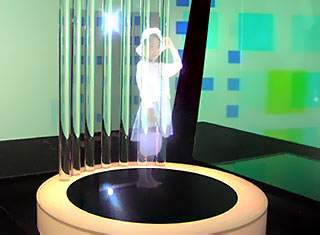 The genesis of today’s Viewpoint was back in March, when we spotted this op-ed referring to Japan mobile that had stated: “What’s different about the Japanese mobile market is that innovation is moving toward business models and marketing tactics instead of technical features and functions.” That op-ed piece in turn cited a new research report on eMarketer, “Japan: Marketing to a Mobile Society,” which insisted: “What stands out in the current Japanese experience is the fact that the center of gravity for getting through to Japanese mobile users has shifted in favor of business models and marketing tactics as opposed to new technical features and mobile phone functions.”
The genesis of today’s Viewpoint was back in March, when we spotted this op-ed referring to Japan mobile that had stated: “What’s different about the Japanese mobile market is that innovation is moving toward business models and marketing tactics instead of technical features and functions.” That op-ed piece in turn cited a new research report on eMarketer, “Japan: Marketing to a Mobile Society,” which insisted: “What stands out in the current Japanese experience is the fact that the center of gravity for getting through to Japanese mobile users has shifted in favor of business models and marketing tactics as opposed to new technical features and mobile phone functions.”
We took exception to both these as serious mis-analyses of the cornerstone role that technological innovation and network infrastructure competition have played – and continue to play – in powering Japan’s mobile success story. After contact with the eMarketer editors, we agreed to write separate opinion pieces, which we would both republish side-by-side in our newsletters, as an excellent way to hash out the topic and let you – our collective readers – decide.
Sadly, the marketing guys at eMarketer quashed the idea, as the subject and the detailed discussion would be “too technical a topic for our [eMarketer’s] newsletter.” But we know that WWJ readers are more than smart enough to figure out for themselves what’s really driving the mobile Internet in Japan! So we wished the eMarketer editors best of luck in the future, again gave thanks that WWJ doesn’t have any meddling marketing guys, and herewith present to you our Viewpoint.
(Subscribers login to access the full article by WWJ editor Daniel Scuka)
Image: Holographic projection demo at NTT DoCoMo R&D Labs, November 2006 ©Mobikyo
 Plenty of news today considering the recent announcement from Apple, the iPhone 3GS will hit here June 26th, so we thought it would be worthwhile to review where things stand to-date for Steves Amazing Device in Japan. Since both Apple and SoftBank Mobile have always refused to disclose unit sales, even targets for that matter, it has naturally been an ongoing obsession for many – how is the iPhone doing in Japan? There are several angles to approach this on so for starters lets just say that, while there seems to be recent awakening and therefore increased adoption, expectation often leads to disappointment.
Plenty of news today considering the recent announcement from Apple, the iPhone 3GS will hit here June 26th, so we thought it would be worthwhile to review where things stand to-date for Steves Amazing Device in Japan. Since both Apple and SoftBank Mobile have always refused to disclose unit sales, even targets for that matter, it has naturally been an ongoing obsession for many – how is the iPhone doing in Japan? There are several angles to approach this on so for starters lets just say that, while there seems to be recent awakening and therefore increased adoption, expectation often leads to disappointment.

 Only those who have been totally blocked-out from all media sources over the last year would wonder what an iPhone is as the so-called “Jesus Phone” has been in the mainstream headlines since even before it was officially unveiled in January. However, for a combination of reasons, there has only been mild speculation about when – or indeed how – it would become available in the Japanese market. Citing the initial lack of 3G capability, not too mention an ‘unusual’ operator revenue share arrangement, the story so far has centered around deployments in the US and Europe. Full skinny after the jump!
Only those who have been totally blocked-out from all media sources over the last year would wonder what an iPhone is as the so-called “Jesus Phone” has been in the mainstream headlines since even before it was officially unveiled in January. However, for a combination of reasons, there has only been mild speculation about when – or indeed how – it would become available in the Japanese market. Citing the initial lack of 3G capability, not too mention an ‘unusual’ operator revenue share arrangement, the story so far has centered around deployments in the US and Europe. Full skinny after the jump! Domestic market incumbant NTT DoCoMo came out with all guns blazing during their press conference at the Grand Park Hyatt in Tokyo on November 1st. For the first time ever they combined the launch for both of their upcoming 700 and 900 series models – a record 23 handsets unveiled at once – and the
Domestic market incumbant NTT DoCoMo came out with all guns blazing during their press conference at the Grand Park Hyatt in Tokyo on November 1st. For the first time ever they combined the launch for both of their upcoming 700 and 900 series models – a record 23 handsets unveiled at once – and the  The 3rd annual
The 3rd annual  The genesis of today’s Viewpoint was back in March, when we spotted
The genesis of today’s Viewpoint was back in March, when we spotted 